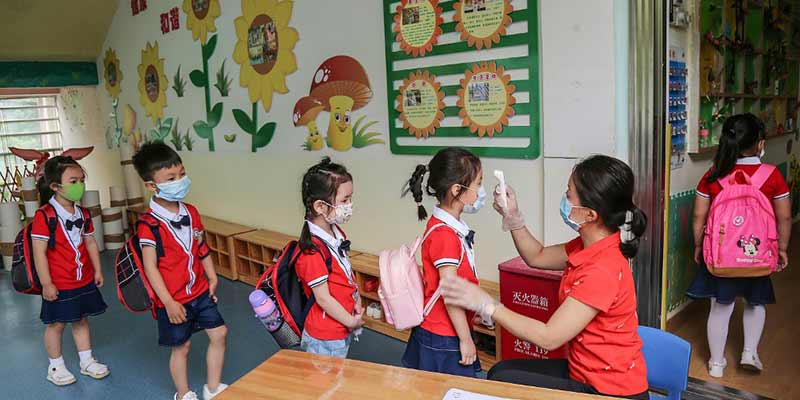- World
- May 27
Rare child syndrome linked to COVID-19
A few days ago, New York governor Andrew Cuomo said that the number of countries that have reported cases of a rare inflammatory syndrome linked to COVID-19 and impacting children has nearly doubled to 13.
New York, which has taken a lead in tracking the so-called multisystem inflammatory syndrome in children in the US, is one of 25 US states with reported cases of the syndrome, Cuomo said.
The World Health Organisation (WHO) flagged initial reports from Europe and North America that have described clusters of children and adolescents requiring admission to intensive care units with a multisystem inflammatory condition with some features that are similar to those of Kawasaki disease and toxic shock syndrome.
Case reports have described a presentation of acute illness accompanied by a hyperinflammatory syndrome, leading to multiorgan failure and shock, the international health body said in a scientific brief on the subject.
According to Mike Ryan, executive director, WHO Health Emergencies Programme, the syndrome is rare and only by examining large groups of children can the cause of the disease be established. “Also, it’s a new disease,” Ryan said. The effects of a new disease could sometimes be linked to the virus directly, or could also be the result of the body’s immune response to it. More data would clarify whether this syndrome in kids was due to the former or the latter.
What is Kawasaki Disease?
Kawasaki Disease is a rare condition that typically affects children under the age of five. It causes blood vessels to become inflamed and swollen. The typical symptoms include fever and rash, red eyes, dry or cracked lips or mouth, redness on the palms of the hands and soles of the feet, and swollen glands. Typically, around a quarter of children affected experience cardiac complications, but the condition is rarely fatal if treated appropriately in hospital. It is not known what triggers the condition but it is thought to be an abnormal immune overreaction to an infection.
What we know about MIS-C?
The new ailment is called multisystem inflammatory syndrome in children or MIS-C.
MIS-C is a condition where different body parts can become inflamed, including the heart, lungs, kidneys, brain, skin, eyes, or gastrointestinal organs.
The Centers for Disease Control and Prevention says experts do not yet know what causes MIS-C. However, they add that many children with MIS-C had the virus that causes COVID-19, or had been around someone with COVID-19.
MIS-C can be serious, even deadly, but most children who were diagnosed with this condition have gotten better with medical care.
What are the symptoms of MIS-C?
According to the preliminary case definition, children and adolescents from 0-19 years of age with fever for more than three days and two of the five symptoms should be identified as suspected or confirmed cases both for the purpose of providing treatment and for provisional reporting and surveillance. They are:
1) Rash or bilateral non-purulent conjunctivitis or muco-cutaneous inflammation signs (oral, hands or feet).
2) Hypotension or shock.
3) Features of myocardial dysfunction, pericarditis, valvulitis, or coronary abnormalities (including ECHO findings or elevated Troponin/NT-proBNP).
4) Evidence of coagulopathy (by PT, PTT, elevated d-Dimers).
5) Acute gastrointestinal problems (diarrhoea, vomiting, or abdominal pain).
How is MIS-C treated?
According to WHO, children have been treated with anti-inflammatory treatment, including parenteral immunoglobulin and steroids.
“It is essential to characterise this syndrome and its risk factors, to understand causality, and describe treatment interventions. It is not yet clear the full spectrum of disease, and whether the geographical distribution in Europe and North America reflects a true pattern, or if the condition has simply not been recognised elsewhere,” a scientific brief said.
Manorama Yearbook app is now available on Google Play Store and iOS App Store

